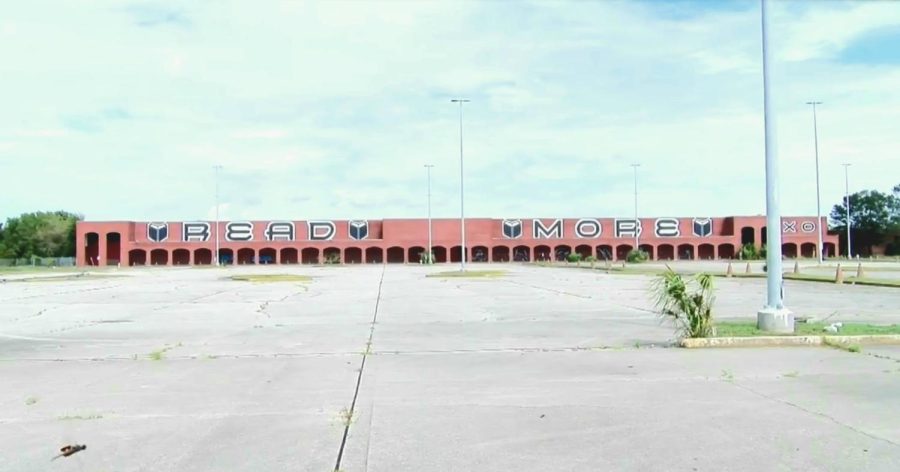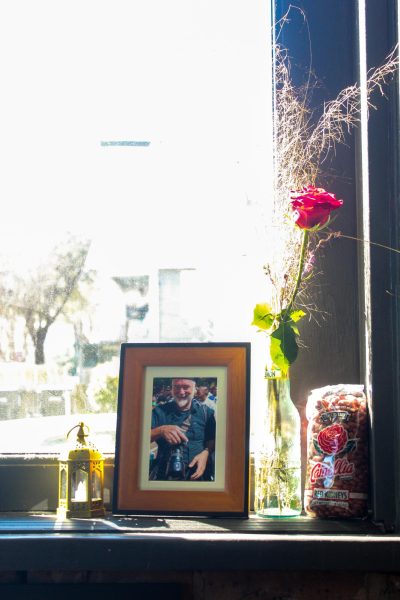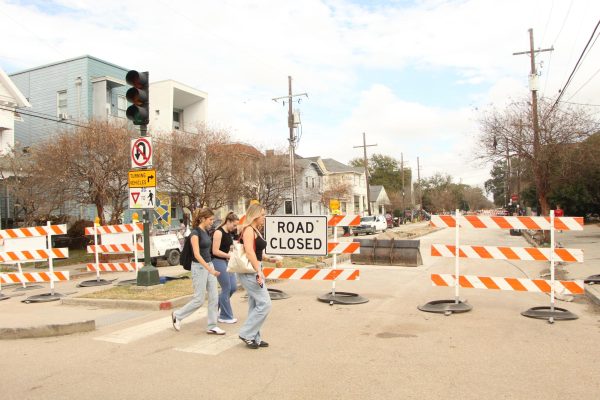Commercial development meets continued challenges in New Orleans East
The building formerly used as a Schwegmann’s grocery store on Bullard Avenue stands empty in New Orleans, LA on Wednesday, Oct. 3, 2021. The building has been vacant since Hurricane Katrina in 2005, a testament to the decline in business within the East that was accelerated by the Hurricane.
Lois Washington raised her three children, became a grandmother of five, and even became a great grandmother in New Orleans East. She moved there 47 years ago, at a time when it was the ideal place to live out a suburban lifestyle in the city.
Then, Washington could go out to the Lake Forest Plaza shopping mall, bring her family to Six Flags New Orleans, or shop for groceries at Shwegman’s grocery store. Now, Washington drives at least 20 minutes to Metairie if she wants to go shopping or grab a bite to eat.
“We don’t have nothing out here,” Washington said.
Businesses like the mall, Six Flags, and Schwegman’s stand empty or wiped away, having been closed years ago, the Orleans Parish Assessor’s Office said, and the explanations for the decrease in businesses within the area vary.
Charles Cannon, a professor of English at Loyola, who specializes in New Orleans studies, said that the East started off as a place where middle-class families could escape the city to live out a suburban dream.
Cannon said people are moving away from car-dependent neighborhoods, and since the East isn’t walkable, it has become a less than desirable place to invest. Cannon also said racism contributes to the East’s decline.
Muralist Brandan “B-Mike” Odums said he sees a lack of commercial growth as one of the reasons the area is still affordable.
“The beautiful struggle of New Orleans is that those individuals who make New Orleans special are typically the ones who have the most difficult time sustaining themselves in New Orleans,” Odums said.
Those New Orleanians struggling are the ones currently being pushed out into the East, he said.
White flight, the phenomenon of White people moving out of areas increasingly dominated by minorities, is what led many to move out of the area as Black families moved in during the 80s and 90s, according to Nola.com. By the early 2000s, Black residents in the area had been complaining about a lack of restaurants and other businesses, Nola.com said.
Cathy McGehee worked as a commercial realtor in New Orleans East for 35 years and said that the area has been “depressed” since she’s been in business.
“It’s just gotten worse,” McGehee said. She said she now leaves commercial real estate sales in the area to those who have the motivation for it.
“I don’t want to constantly be going out to show these vacant buildings that never sell,” McGehee said.
Her real estate mentee, Michael Naquin, said that it’s hard to sell commercial real estate in the East because businesses have certain property, population, and income-level requirements for locations.
The East is home to a third of the New Orleans population, yet the median income level isn’t high enough for many businesses to consider, Naquin said.
The median household incomes in 2018 for the area was $24,200 for zip code 70126 and $27,200 for zip code 70127, the Statistical Atlas said. Both numbers are below the median income that same year of New Orleans as a whole, which was $37,500, according to the atlas.
While commercial development has been declining, Cannon said cultural developments have been going strong.
Maurice Carlos Ruffin and Sarah Broom, who both grew up in the East, are two of the most recent celebrated New Orleans writers. Ruffin authored “We Cast a Shadow” and Broom wrote “The Yellow House.”
“Those are a couple signs, especially Sarah Broom’s memoir, that there is a growing interest in New Orleans East as part of the broader cultural mix of New Orleans,” Cannon said.
Odums said that to preserve these communities whose members make up the unique identity of the city, “it takes an investment into the creative community to allow them to continue to exist as the city progresses.”

Jackie Galli is proud to be one of the editors in chief at The Maroon this year. She is a senior mass communication major with a concentration in journalism,...






Michael Barnett • Oct 24, 2021 at 10:25 pm
LOL Imagine blaming the problems in New Orleans East on walkability and racism. What a clownshow. It’s the crime, stupid.